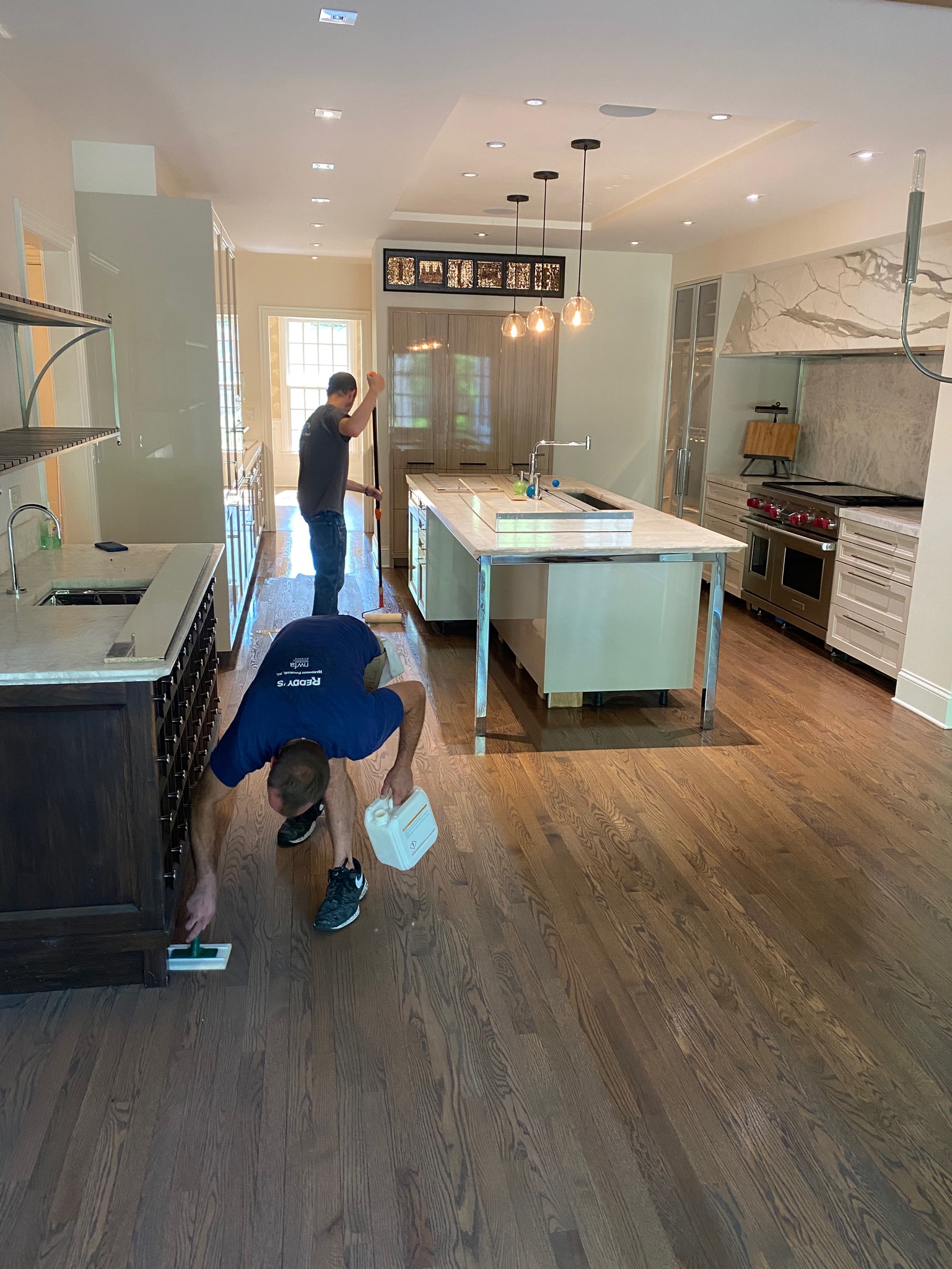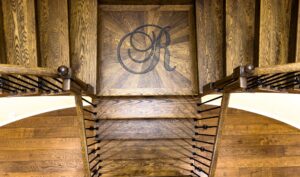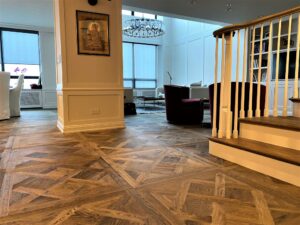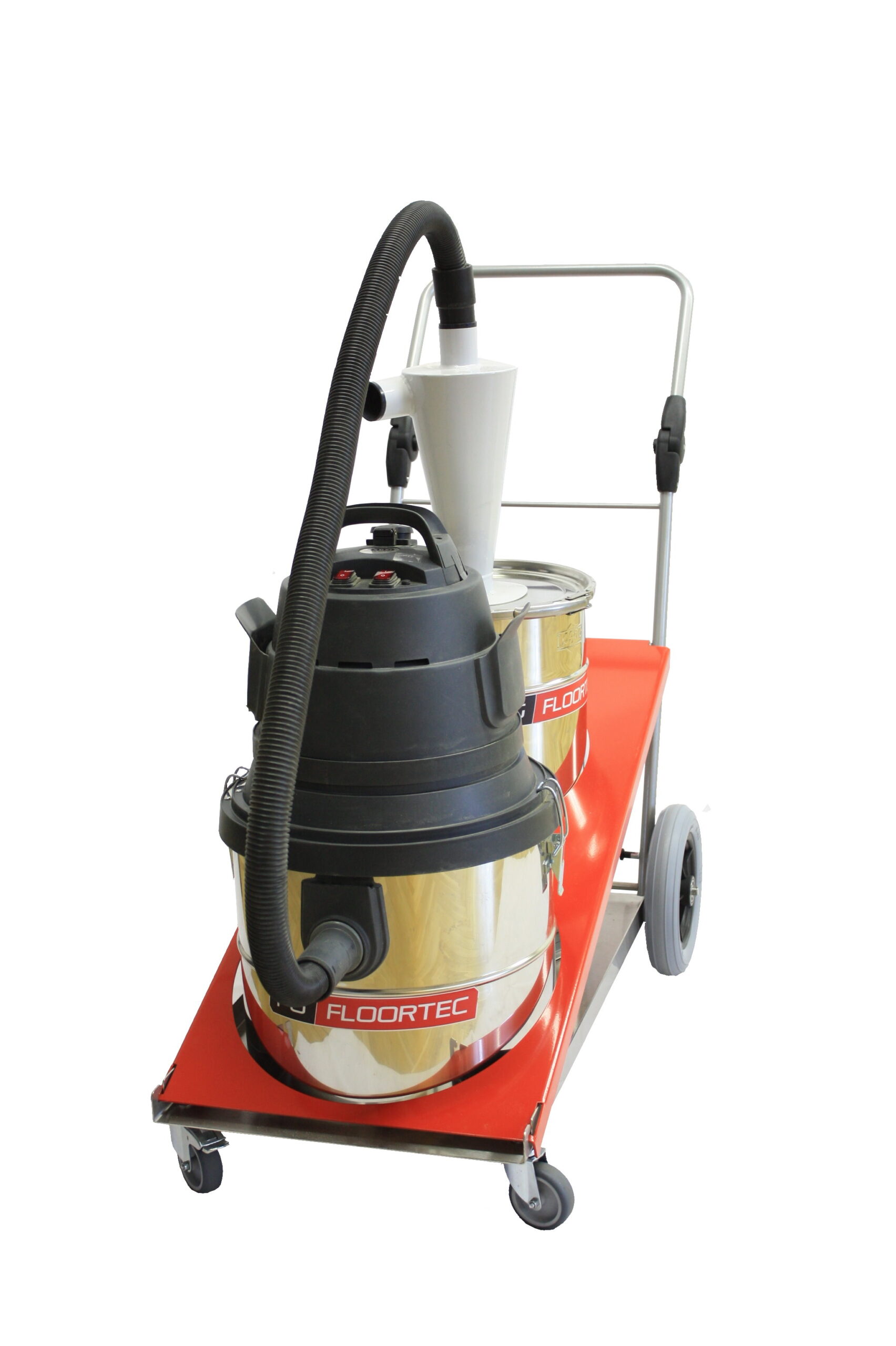Hardwood flooring adds a timeless and elegant touch to any home, but it requires diligent care to maintain its beauty and longevity. Proper maintenance varies depending on the type of hardwood, and understanding these differences is essential for preserving your floors. This guide provides an in-depth look at maintaining various species of hardwood, as well as engineered and prefinished hardwoods, to ensure they remain in optimal condition for years to come.
Maintenance by Hardwood Species
Oak (Red & White)
Oak is one of the most popular choices for hardwood flooring due to its durability and versatility. Whether you have red or white oak, maintaining it requires regular cleaning with a wood-specific cleaner to prevent dust and debris from scratching the surface. To ensure the floor retains its luster, it’s advisable to apply a maintenance coat every 3 to 5 years. Buffing and recoating oak floors is particularly effective, as they respond well to these treatments. Before applying a new coat, ensure the surface is free of contaminants like wax or oil to achieve a smooth finish.
Maple
Maple hardwood is known for its dense and durable nature, accompanied by a smooth, fine grain. Due to its less porous surface compared to oak, maple requires a mild, non-abrasive cleaner for routine care. Recoating the floor every 2 to 4 years will help maintain its finish, especially in areas with high foot traffic. Maple’s density means that thorough buffing is essential to avoid uneven coating during maintenance. In busy areas, more frequent recoating may be necessary to protect the wood’s finish.
Cherry
Cherry hardwood flooring is prized for its rich color, which deepens over time. However, it is softer than other hardwoods, making it more susceptible to dents and scratches. Gentle cleaning is crucial to avoid causing damage, and recoating every 3 to 4 years is recommended to protect the delicate surface. When buffing cherry floors, care must be taken to avoid gouging the wood, as its softness makes it more vulnerable. Regular recoating will help maintain its beautiful, evolving hue.
Walnut
Walnut floors boast a dark, rich color with a softer texture, making them a luxurious choice for many homeowners. Cleaning walnut floors should be done with a pH-neutral cleaner to avoid stripping the finish or damaging the wood. Given walnut’s softness, it’s essential to buff the surface lightly to prevent scratches. Recoating every 2 to 3 years will help preserve its dark, elegant appearance and protect it from everyday wear.
Hickory
Hickory is among the hardest and most durable hardwoods, characterized by its varied grain patterns. Regular cleaning is necessary to keep hickory floors looking their best, and maintaining proper humidity levels is crucial to prevent warping. Recoating hickory floors every 3 to 5 years will help protect their surface. Due to its hardness, buffing hickory can be challenging, so using a high-quality abrasive is recommended. Ensure that all areas are evenly coated to avoid inconsistencies in the finish.
Exotic Woods (e.g., Brazilian Cherry, Tigerwood, Teak)
Exotic hardwoods like Brazilian Cherry, Tigerwood, and Teak are known for their density and natural oils, which make them more resistant to wear but also more challenging to maintain. It is essential to use cleaners specifically formulated for exotic woods to avoid damaging their surface. Depending on the level of foot traffic, recoating should be done every 2 to 4 years. Exotic woods often contain natural oils that can affect the adhesion of new finishes, so thorough cleaning and drying before buffing and coating are critical to achieving a smooth finish.
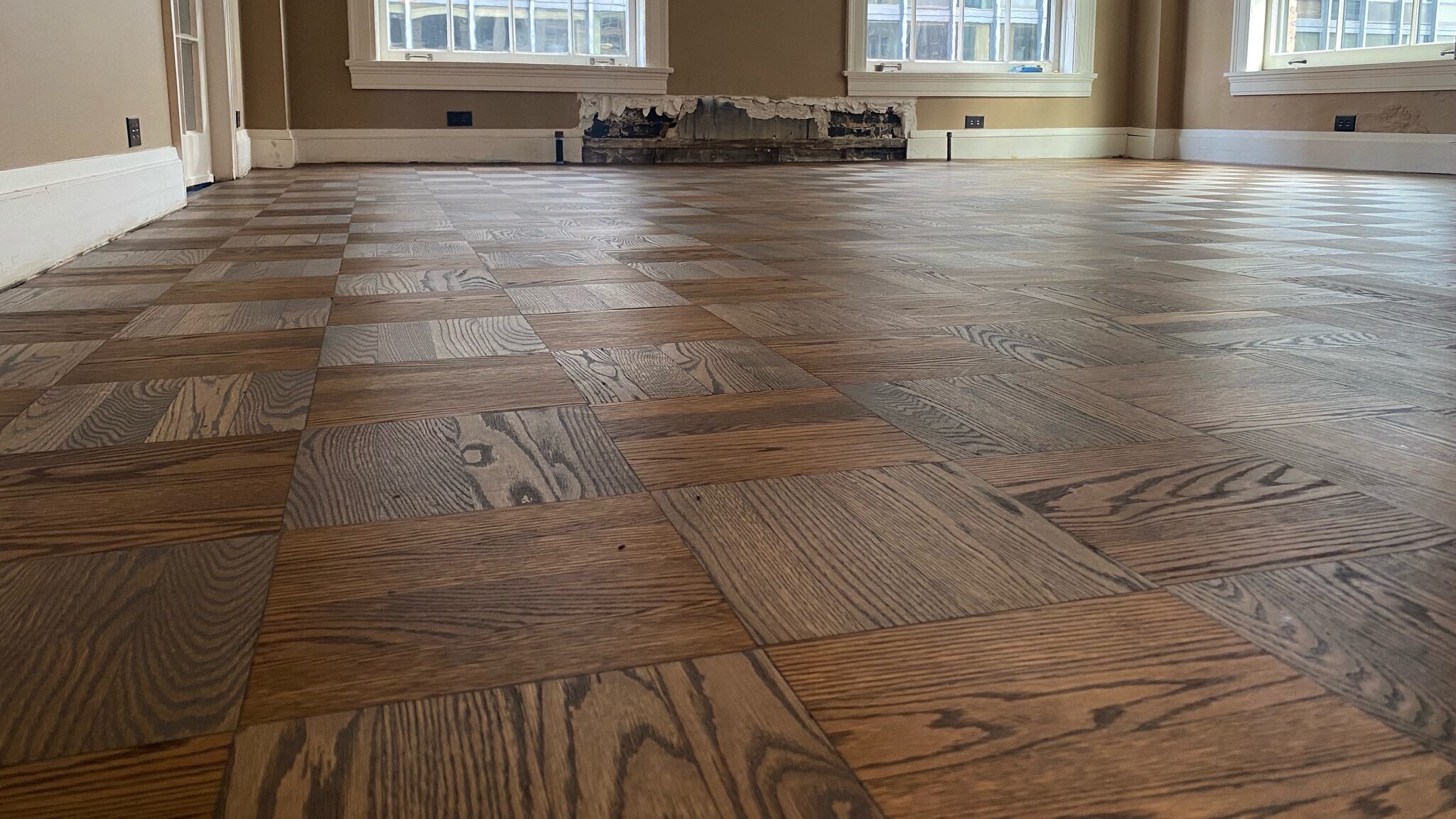
Engineered Hardwood Maintenance
Cleaning
Engineered hardwood floors require similar surface cleaning as solid hardwood floors. Regularly sweeping or vacuuming to remove dirt and debris is essential. Using a damp microfiber mop with a wood-safe cleaner will help maintain the floor’s appearance without causing damage. Humidity control is crucial for engineered hardwood to avoid warping or delamination, so it’s important to keep indoor humidity levels stable.
Buffing & Coating
While engineered hardwood can be buffed, it’s important to exercise caution due to its thinner wear layer compared to solid hardwood. Buff gently with a fine-grit abrasive to avoid wearing through the surface. When recoating, ensure the wear layer is thick enough to support a new finish. Always follow the manufacturer’s recommendations regarding compatible finishes to avoid damaging the floor.
Prefinished Hardwood Maintenance
Cleaning
Prefinished hardwood floors, like engineered hardwood, require routine care to maintain their factory-applied finish. Regular sweeping or vacuuming and using a damp mop with a wood-safe cleaner will keep these floors in good condition. It’s important to avoid wax-based products, as they can interfere with the factory finish, causing dullness or streaking.
Buffing & Coating
Buffing prefinished floors can be done if necessary, but it’s important to note that this may void the manufacturer’s warranty. When recoating, it’s challenging due to the factory-applied finish, so ensure the surface is thoroughly cleaned and test for finish compatibility before applying a new coat. This careful approach will help preserve the original appearance of the floor.
Buff and Coat Procedures
Step-by-Step Instructions
- Surface Preparation: Start by sweeping and vacuuming the floor thoroughly to remove all dust and debris. Clean the floor with a recommended wood floor cleaner, ensuring any contaminants such as wax, polish, or grease are removed.
- Buffing: Use a rotary sander or buffer with the appropriate abrasive pad. Buff the entire floor evenly, paying special attention to edges and corners. After buffing, vacuum the dust and tack the floor to ensure it’s clean before applying a new finish.
- Coating: Apply the chosen finish evenly using a recommended applicator. Follow the manufacturer’s instructions for drying time and additional coats if necessary. Allow the floor to cure fully before subjecting it to heavy foot traffic, ensuring a long-lasting, durable finish.
Routine Maintenance Schedule
- Weekly: Sweep or vacuum the floor to keep it free of dirt and debris. Damp mop with a wood-safe cleaner to maintain its shine.
- Monthly: Inspect the floor for signs of wear or damage. If needed, apply a fresh coat of finish to high-traffic areas to protect the wood.
- Annually: Deep clean the floor, making sure to address corners and edges that might be overlooked during regular cleaning. Consider hiring a professional buff and coat service to refresh the floor’s appearance and protect its finish.
Final Thoughts
Proper maintenance tailored to the specific type of hardwood is crucial for preserving the beauty and functionality of your flooring. By following the guidelines in this guide, you can extend the life of your hardwood floors, ensuring they remain a stunning feature in your home for years to come. Whether your floors are solid, engineered, or prefinished wood, the right care and attention will make all the difference in maintaining their timeless appeal.

